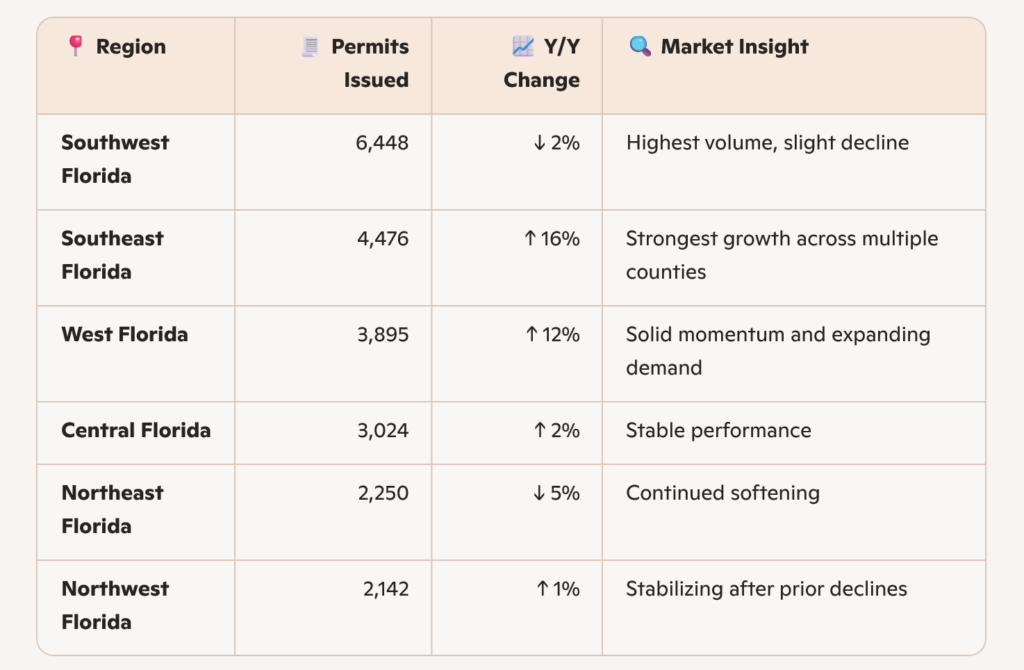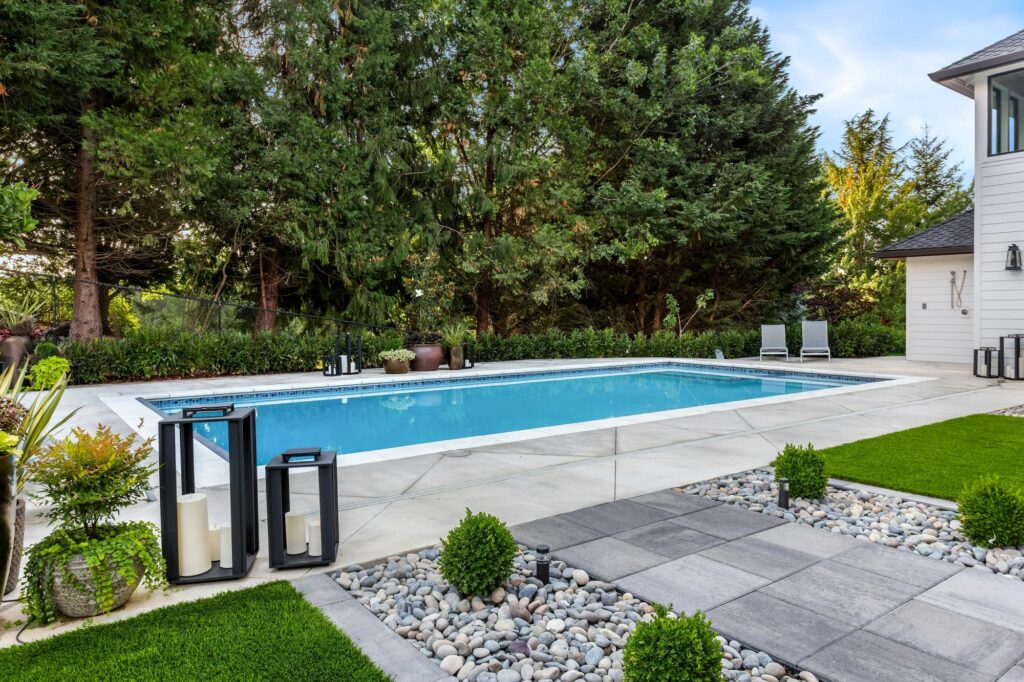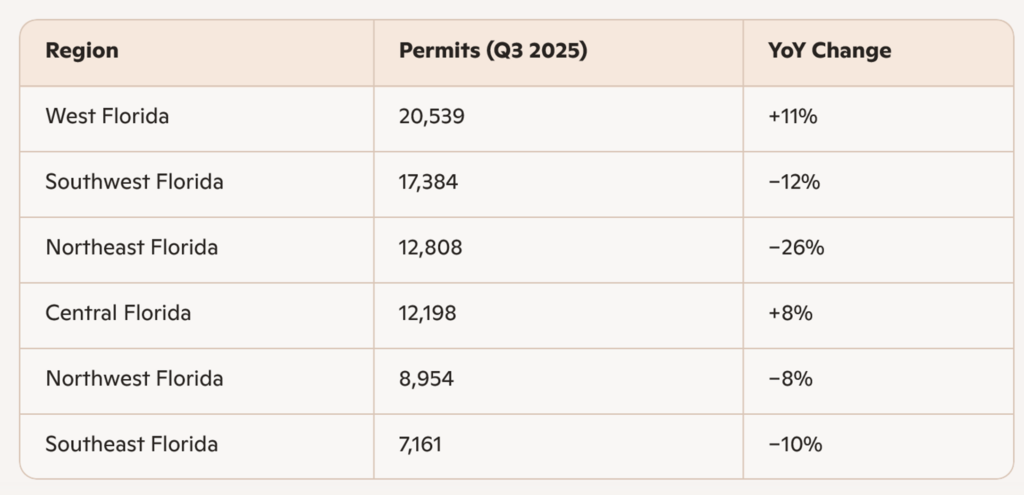
Florida’s residential swimming pool construction market remained active in October 2025, with HBW reporting a total of 1,906 new pool permits added across the state. The latest construction data report, drawn from five key regions (Southwest, Southeast, Tampa, Orlando, and Jacksonville), offers a comprehensive snapshot of market dynamics, including permit volumes, construction values, and regional trends. While overall activity reflects steady demand, regional disparities in average project value and permit concentration reveal important insights for builders, developers, and market analysts.
Southwest Florida: Leading in Volume and Value
The Southwest region continues to dominate Florida’s pool construction landscape, both in terms of volume and total investment. In October, the region recorded:
- Total Permits: 688
- Total Construction Value: $57,535,869
- Average Value per Permit: $83,628
The counties of Sarasota (199 permits), Lee (199 permits), and Collier (123 permits) were the primary drivers of this activity, each contributing significantly to the regional total. The high volume, combined with a strong average value, underscores the region’s sustained growth in mid-to-high-end residential development. Builders operating in this market are likely benefiting from a combination of population growth, favorable climate, and a strong demand for outdoor luxury amenities.
Southeast Florida: High Activity, Lower Average Value
Southeast Florida followed with 396 new permits and a total construction value of $29,486,447. However, the region posted the lowest average value per permit statewide at $74,461, suggesting a higher concentration of standard or mid-range pool installations.
- Top Counties: Palm Beach (144 permits) and Miami-Dade (100 permits)
This trend may reflect a more competitive pricing environment or a shift toward smaller-scale projects in densely populated urban areas.
Tampa Area: Balanced Growth with Competitive Values
The Tampa region reported 367 new permits in October, with a total construction value of $29,405,759 and an average value of $80,125 per permit. This places Tampa in the mid-range for both volume and valuation.
- Leading Counties: Hillsborough (95 permits), Pasco (84 permits), and Sumter (83 permits)
The region’s balanced performance suggests a healthy mix of project types, from entry-level pools to more customized installations. The consistent demand across multiple counties indicates a stable and diversified market.
Orlando/Central Florida: Moderate Volume, Competitive Valuation
Orlando and surrounding Central Florida counties contributed 292 new permits, totaling $22,899,914 in construction value. The average value per permit was $78,424, which is lower on the spectrum than most other regions reviewed.
This region’s performance reflects steady suburban growth and a steady demand for residential amenities. Builders in the area may benefit from targeting family-oriented communities and new housing developments.
Jacksonville: Fewer Permits, Highest Average Value
Although Jacksonville recorded the lowest number of permits statewide at 163, it stood out with the highest average construction value at $107,349. The total value of new pool construction reached $17,497,935 for the one-month period.
The data suggests a focus on premium, high-end pool installations, likely tied to luxury home construction and affluent suburban developments. Builders in this market may find success by specializing in custom, design-intensive projects.
Statewide Overview
- Highest Permit Volume: Southwest Florida (688 permits)
- Highest Average Value: Jacksonville ($107,349)
- Lowest Average Value: Southeast Florida ($74,461)
The October 2025 data highlights the importance of regional strategy in Florida’s swimming pool construction sector. While some markets thrive on volume, others are driven by high-value, bespoke installations. For construction professionals, aligning services with regional demand profiles, whether through scalable operations or luxury customization, will be key to capturing market share and sustaining growth in the months ahead.
To gain more information on the builders, homeowners and permits for the construction activity above, check out HBW for your copy of the latest construction data reports. To gain access to the HBW database and receive custom and detailed reports on the latest residential and commercial building activity in Florida, Georgia, Texas, Alabama, and Oklahoma, please contact HBW for details.











